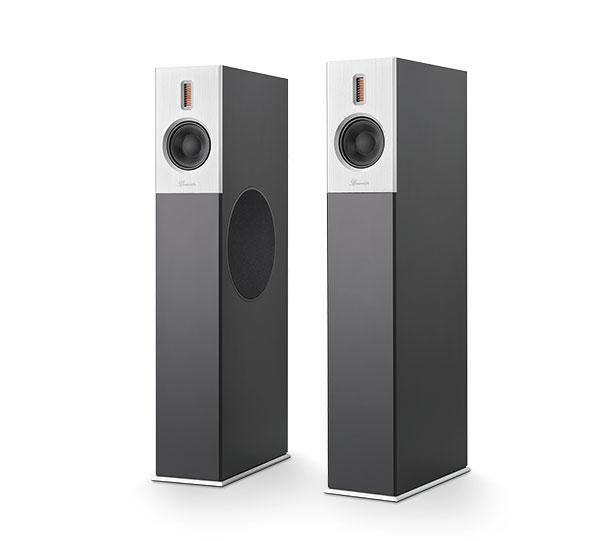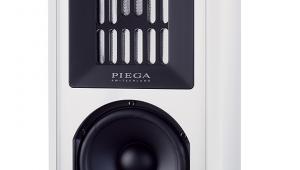Burmester B38

 German marque’s flagship B series floorstander offers smart bass-tuning potential. Is this the speaker for every room?
German marque’s flagship B series floorstander offers smart bass-tuning potential. Is this the speaker for every room?
Although the largest and most expensive member of Burmester’s B series loudspeakers (which are ranged below its BA and BC models), the £22,700 B38 doesn’t – when viewed front on at least – look quite like the all-singing, all-dancing range-topper you might expect. Yes, it’s marginally taller than the step-down B28 (£17,600), at 1165mm versus 1144mm, but it’s also slimmer, its 210mm width shaving off 13mm. And then there are the drivers, with the B28 having four cascading down its front baffle, while the B38 features just two…
So what’s going on here? As the German manufacturer explains, ‘scaling up the concept’ of its slim, classic-looking loudspeaker line, including by expanding cabinet depth here to a substantial 460mm, has enabled the use of side-firing 320mm bass drivers, rather than the smaller front-firing woofer pair of the B28. This is a technique also used on its costlier models, and the result, pledges Burmester, is a speaker that’s still slender enough to blend into a room while still offering an ‘impulsive and powerful bass reproduction’.
Melody In Motion
This interest in the low-end will not surprise anyone familiar with the company, as founder Dieter Burmester (who passed away in 2015) played bass guitar in bands in his youth before his interest in music morphed into an interest in music reproduction. Yet while Burmester Audiosysteme was officially established in 1978 in Berlin (its first product being the 777 preamp), it wasn’t until 1994 that attention turned to speakers, and the use of Air Motion Transformer (AMT) tweeters in particular.
Skip forward 30 years and all the company’s speakers, bar the entry-level £11,800 B18 floorstander, which has a soft dome tweeter, use AMT units. These, says Burmester acoustic engineer Felix Koslowski, are bespoke designs made in conjunction with a trusted, long-term German supplier. The AMT found on the B38 is a new iteration, its height and width tailored to the speaker, and with a high-frequency reach rated to 33kHz. Next up (or down, if you prefer) is the B38’s dedicated midrange driver, a 170mm fibreglass cone, which is again mounted seamlessly within the speaker’s aluminium front panel.
Tweaks ’n’ Toggles
Both this unit and the AMT tweeter are internally isolated from the B38’s piece de resistance, the aforementioned 320mm woofer. The driver’s paper sandwich cone is hidden behind a non-removable grille and backed by a large neodymium magnet assembly. A bass reflex design, the B38’s alignment is ‘tuned’ by a rear-firing port, with a foam insert and ‘room adaption’ toggle that enables further user tweaking.
This trio of drivers, plus the speaker’s 150Hz/2.4kHz crossover network (fed via a low-slung terminal plate with gold-plated milled OFC terminals supporting both bi-amp and bi-wire connections), are housed in a cabinet weighing a considerable 51.5kg. Contributing to its heft are two-layer 38mm-thick cabinet walls, FEA-optimised internal bracing and a base plate that decouples the enclosure from the floor by a ‘computer-calculated spring-mass’ damping system evolved from that used in the B18. Strength and mass also come from the stainless steel ring used to secure the large bass driver to the side wall.
Burmester, bashful as ever, declares the B38’s aesthetic design to be ‘simply perfect’, and those who appreciate a look that’s all straight lines and hard angles might well agree. Certainly, it has an elegant air, particular in its white, black or mid-grey finishes, while an American Walnut veneer is offered for buyers seeking a more traditional feel. As with all of the company’s products, the loudspeaker is hand-built at its Berlin facility, its chassis ‘run in’ for a week before final assembly, and pairs then matched.
As regards setup, the B38’s manual doesn’t establish a preference for having the speakers toed-in, instead suggesting experimentation (‘this is easier to do with a helper or two rather than alone’) and keeping the cabinets a minimum of 50cm from side and rear walls. Lastly, although these floorstanders have a slender visage, they’re still big and in turn will benefit from amplification of equal stature, as evidenced by Burmester’s 4ohm nominal impedance and 86dB sensitivity ratings. I used my regular Primare A35.2 power amplifier, paired with the recent Rotel Michi P5 S2 preamp.
























































